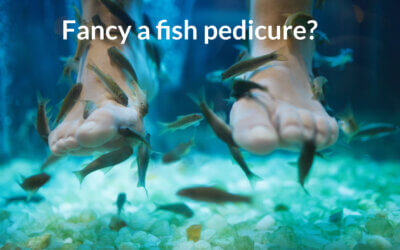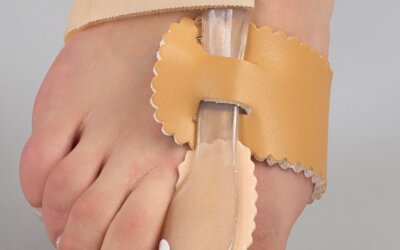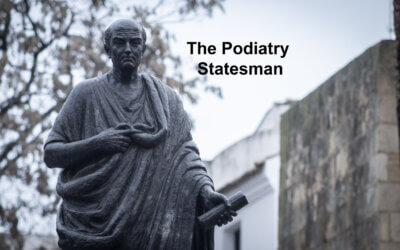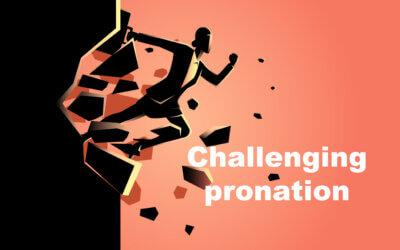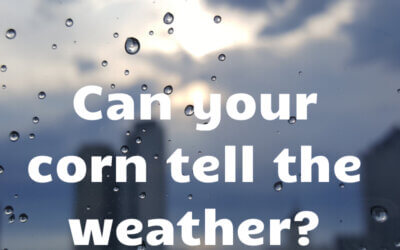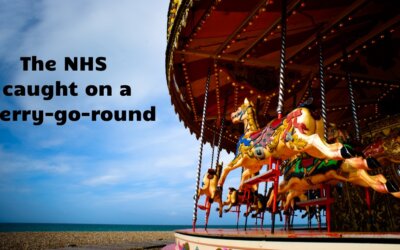Regular Articles
The Fish Pedicure – good or bad?
CFP decided to look into this topic further and found some interesting facts. Yes, you can become infected from the doctor fish, as they are sometimes called, although the fish as Garra rufa fish and are found in the Middle East, such as Turkey, Syria, Iraq, Iran, the Far East – Indonesia. The Garra rufa belongs to the carp family. In their natural habitat, their suction helps them stick to rocks so they feed on plankton. In a town called Kangal, it was observed that the resident Garra rufa fed spared normal skin but ate psoriatic plaques. Let’s look at risk and potential reasons for scaremongering. Secondly, we need to feature the Garra Rufa fish.
The Bunion Corrector.
Patients often ask if this type of device is of value for their bunion, which does not mean the bump, but the deformity called hallux valgus. The splint actually has a purpose and function and could be valuable, but we have to specify some reservations because at best, it takes time for a painful joint to settle. The big toe (hallux) splint is often called a ‘night splint’ (illustrated as the main image) implying that it can only be worn at night. In reality, many designs can be used during the day but the one I intend to introduce is used as an adjunct to treatment and in some cases exercises.
The Social-Historian
My starting point was the 1960 state registration Act, and the reason for that was because Gerry Larkin’s examination of ‘chiropody’ had basically run from the 19th century up to 1960. Thus, the sociology of podiatry had already been written up until 1960, but nothing had followed since then. I saw the opportunity, and took it upon myself to be the person to undertake an analysis of the post-1960 profession, and that’s how it happened. There were other brief articles, mainly by the historian Colin Dagnall, which addressed certain features of the profession during those years, but nothing which specifically drew upon the sociology of the professions.
Delayed Big Toe Surgery!
I look at why there is a discrepancy between being admitted to a private hospital through the NHS. In this case we need to get to the ‘heart’ of the problem. Additionally revision surgery and expectations are discussed with Tom in my conclusion.
Selling & Misselling Orthoses
At ConsultingFootPain my colleagues and I try to take the mystique out of foot health science and recognise it is easy to confuse patients. For example, pronation is yet another word based around anatomical movement.
Sports magazines and journals, podiatrists and others use the word pronation all the time. However, do we know or understand the importance of the term, which can be used to confuse? In addition, there is another angle to this word and one that is often attributed to flat feet.
Threats to Rafael Nadal’s Future?
For you or I, who are low key in our activity, relative to athletes in peak condition, this condition may settle and you can live with the condition adequately. However, the types of forces Nadal creates with tennis foot and ankle contact on the court are akin to the problems beset by Andy Murray with his hip joint. Murray’s hip was more amenable to surgery than Nadal’s foot will be. The reason athletes can push themselves is their competitive streak, motivation, and extreme fitness, long training and ethics to be better than everyone else – this allows them to compensate for the type of problems the regular person would give up on a long time ago.
Musings about corns and callus
My favourite story comes from space
Scott and Don had been in space for 300 and 365 days respectively. Their blogs recorded interesting experiences. Because astronauts are not walking around on the ground under the force of gravity they don’t have to wear shoes in space.
“The calluses on your feet in space will eventually fall off so, the bottoms of your feet become very soft like newborn baby feet. But the top of my feet develop rough alligator skin because I use the top of my feet to get around here on space station when using foot rails.” Scott Kelly
Contact dermatitis and plants
Summer certainly attracts more plants and visitor activity than other seasons. Yet, even as I write this article, I feel itchy. We need to know what to avoid and if we are unfortunate to have a contact rash, we should know what to do. One point about the 10 plants I have picked is that many originate outside the UK while others remain in North America. Given the serious concerns with Japanese Knotweed for example, demonstrates that boundaries do not guarantee that you will come across something that has a kick in its leaf, stem or sap. Skin and respiratory problems arise in some but not all.
A dying healthcare system
Consultants split their time between the NHS and the independent sector, although some remain loyal to the NHS alone. Surgeons often make up their salary in this system, taking away an essential NHS resource – experienced professionals. This was the deal that Bevan had to negotiate. It is true that junior consultants have found it harder to follow their senior colleagues into the independent sector but eventually they trim back their hours if they want to work this sector.
Arthritis and the big toe
I confess I am not keen on the word arthritis as it conjures up a disease of the worst kind. So let us use the phrase ‘arthrosis’ because the term means a condition associated with deterioration of any joint, not just the big toe. Severe forms of arthrosis come under a wonderful term – the arthritides (arth-rit-eedees), which sounds like a member of Jason and the Argonauts crew in Greek mythology. Rheumatoid arthritis and gout are two such conditions which are highly destructive. Already you can see Latin and Greek in our language. Medical people love to make everything sound complicated and a bit of old language helps!
